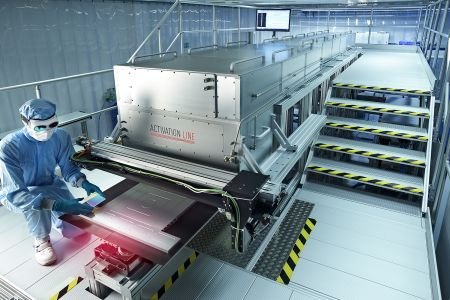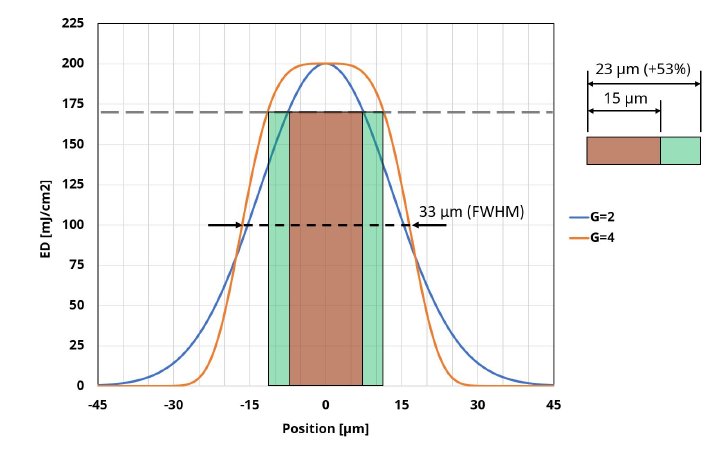Thanks to their brilliant colors, OLEDs have conquered the smartphone display market. But the benefits of this new technology are now also being integrated into smartwatches, tablets, laptops and home theaters. This growth is expected to continue, in particular in the foldable display segment and for the new dashboard displays in the automotive industry.
In response to this trend, significant advances are being made in the industrial production of OLED displays of all sizes. In addition to simply scaling the display area and throughput, the need to boost productivity has also been identified. And that’s exactly where a new beam shaping technology for UV lasers comes into play.
sGauss beam profile for the LLO process
One of the key processes in OLED production is the laser lift-off process (LLO). In this technique, the various functional layers of an OLED display are applied to a plastic layer, which itself has been applied to a glass substrate. Once the OLED layers are complete, the film is separated from the glass substrate by sublimation with a UV laser (laser lift-off).
Solid-state lasers are now also available for use with this process. With a comparable output, these lasers are superior to the excimer lasers that have typically been used up to now, primarily in terms of operating costs. Solid-state lasers deliver excellent beam quality, usually in a Gaussian beam profile. With the aid of special micro-optics, several of these laser sources are transformed into the profile needed for LLO, with lengths of up to 1,000 mm and widths of less than 50 µm. For example, LIMO’s Activation Line UV line beam shaping system, which was awarded the prestigious Prism Award in 2018, has been used for years with great success for OLED lift-off processes in the production of flexible mobile phone displays.
The development team at LIMO has now enhanced the optical design far enough that the Gaussian profiles can be turned into a line with a length of up to 1,000 mm and a width of 30 µm. The new features include significantly steeper edges and a wider intensity maximum. This allows the laser energy to be used much more effectively to separate the display film, and LLO process productivity can be increased by more than 30%. In addition, the sensitive OLEDs are subjected to lower thermal loads (lower ash value), yields are higher, and the OLED displays produced have a longer lifespan.
More productivity or longer laser service life
The new micro-optics for the sGauss profile are modular and feature a continuously adjustable line length and width. Existing systems can also be retrofitted with an sGauss module. This allows manufacturers to either directly boost productivity or, where less laser energy is used with the same systems, significantly extend the service life of their lasers.
Aside from the pure efficiency gains it affords, this new technology will also unlock other applications for UV solid-state lasers, such as annealing and crystallization. Optics is therefore well on its way to becoming an essential part of the UV laser system value chain. As beam shaping continues to improve, the new systems will be increasingly capable of replacing the excimer laser in its current fields of application.



